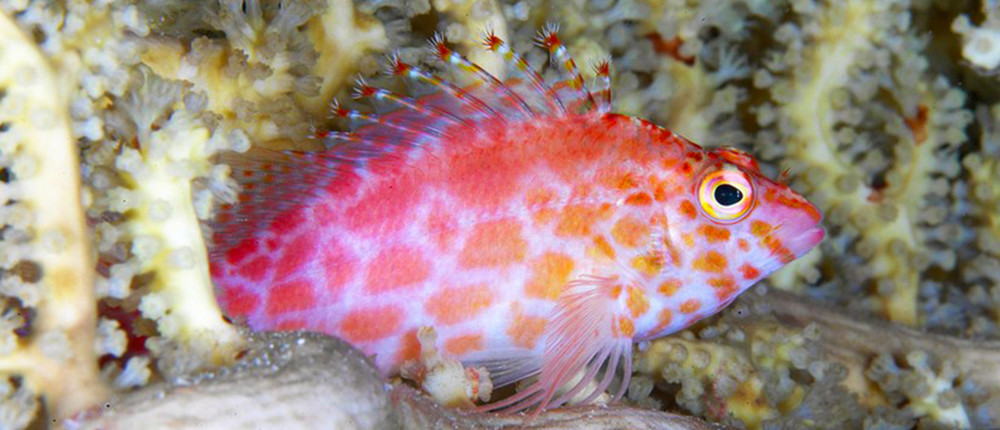Playing the Odds
Spawning Strategies
Most reef fish are egg layers, with complex methods of distribution. The majority of these fishes are pelagic spawners (jacks, butterflyfishes, wrasses, hawkfishes, angelfish); meaning they rise up and release their eggs and sperm high in the water column to send the eggs seaward. During this activity, some species like grouper and snapper will gather in large aggregations at a specific spot to spawn during a precise phase of the moon. For others like parrotfish, it is common for a moderate sized group of breeding fish to congregate, typically at or near dusk, synchronizing the release of their eggs and sperm en masse with others members of their species to avoid predation. The larger the aggregation of breeding animals, the higher the odds that the cycle of eggs, which can number well into the millions, will make it through the larvae stage, then onward to juvenile after a considerable loss along the way. A lucky few will make it through to adulthood and thus repeat the cycle.
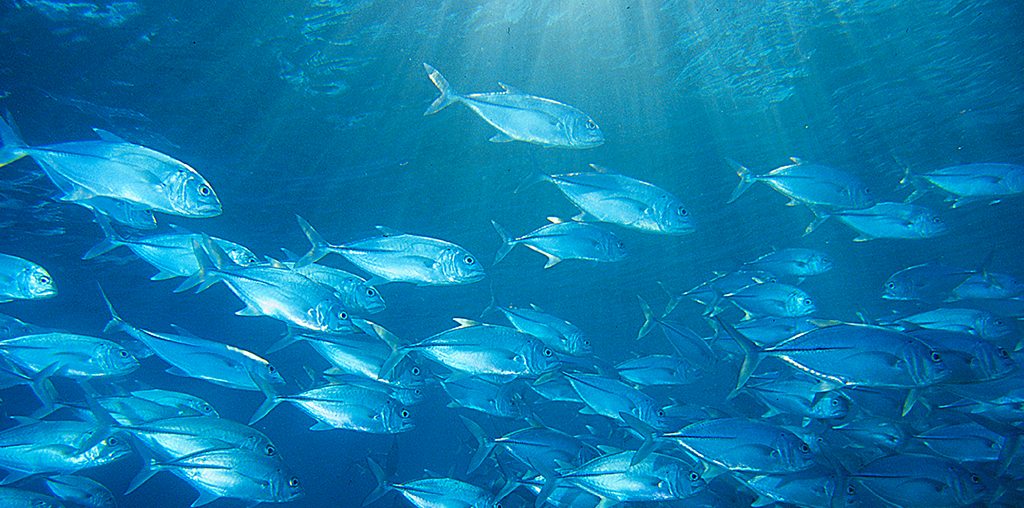
Crevalle jacks are pelagic spawners (as are butterflyfishes, wrasses, hawkfishes, and angelfishes), meaning they rise up and release their eggs and sperm high in the water column to send the eggs seawards. Photo by Doug Richardson
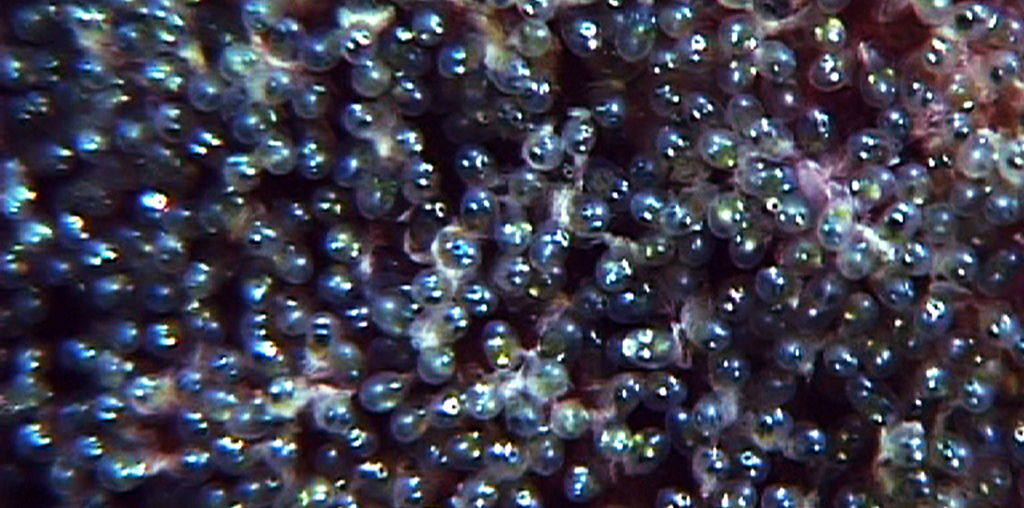
Certain species of fish will lay their eggs on the bottom (some will build a nest in advance) and attach them to the substrate (or solid bottom). Photo by Guy Chaumette
One of the other environmental factors that will play into this cycle is when and where a spawning will take place, such as with lionfish. During times of strong outgoing currents the lionfish will increase the range of distribution for the eggs, thereby increasing the potential success rate and distribution assuring survival of the species.
By contrast, fish like damselfishes, triggerfish, anemonefishes, gobies, blennies and other similar species, will lay their eggs on the bottom (some will build a nest in advance) and attach them to the substrate (or solid bottom) like the cluster of eggs seen above. Afterward, some will zealously protect the eggs up until the day of hatching. On that day, the larvae are left to their own devices as they drift away. Nest builders are rare on the reef but fascinating to watch; they are highly industrious as they clear a site of all algae and debris and fiercely guard it. They are also protective parents after the eggs are deposited, and they will continue to guard the burrow until the eggs hatch.
Growing Up On the Reef
When settling on the reef, some larvae use their sense of smell and hearing to find a place where individuals of the same species are already living. This guarantees they’ll find food corresponding to their diet and that the environment is well adapted to their species. It also means that they are in direct competition with some of other residents on the reef. Welcome to life in the big city.
Some juveniles quickly understand that instead of hiding from predators, they may as well face them and be part of their team!
Because fish are not all born under the same lucky star, some have to be more creative than others when finding their path through life. Some juveniles quickly understand that instead of hiding from predators, they may as well face them and be part of their team! They wear a specific color, an electric blue, which is actually a clear advertisement of the service they can offer to predators. Commonly known as “cleaner blue,” is a blue wave that fish can see very well and therefore identify, as seen here on two cleaner wrasses grooming the pufferfish. By offering cleaning services, this removes the predator-prey relationship that normally rules the juvenile’s life.
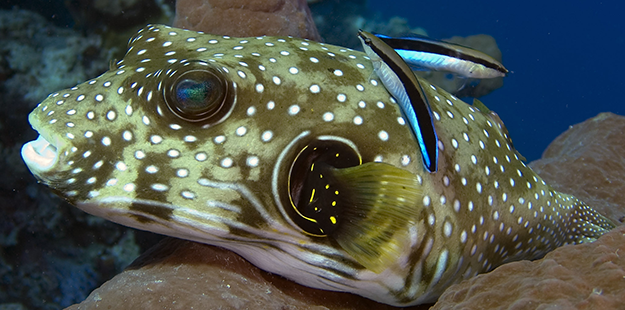
Offering cleaning services removes the predator-prey relationship that normally rules the juvenile’s life. Photo by Mark Snyder
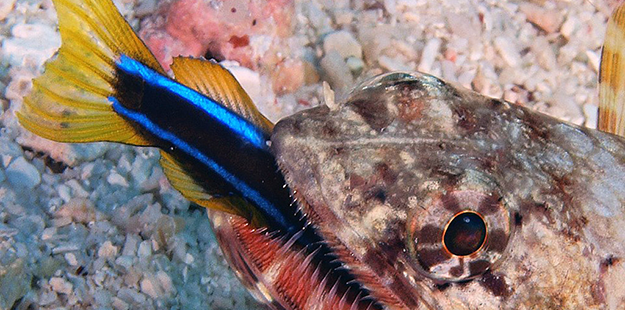
A lizardfish was not easily fooled by the blue stripes on this blue-striped fang blenny, which often mimic the cleaner wrasse. Photo by Dieter Freundlieb
Life is tough on the reef, and fish don’t get to rest during any phase of their life. No matter how charmed or successful that life might be, sooner or later they will eventually fall prey and completing the circle of life.
To learn about Wakatobi contact our office at office@wakatobi.com or complete a quick trip inquiry on wakatobi.com. A guest experience representative will be in touch with you to answer any questions and discuss your next dream dive vacation.
To view more great Wakatobi imagery visit us on TUMBLR.


